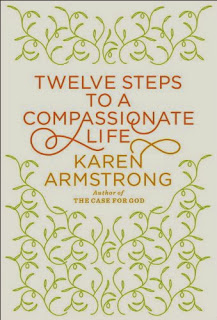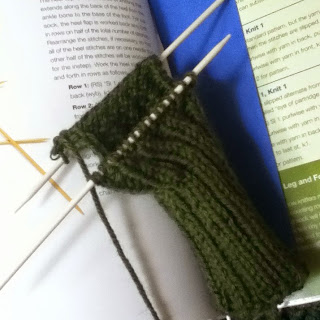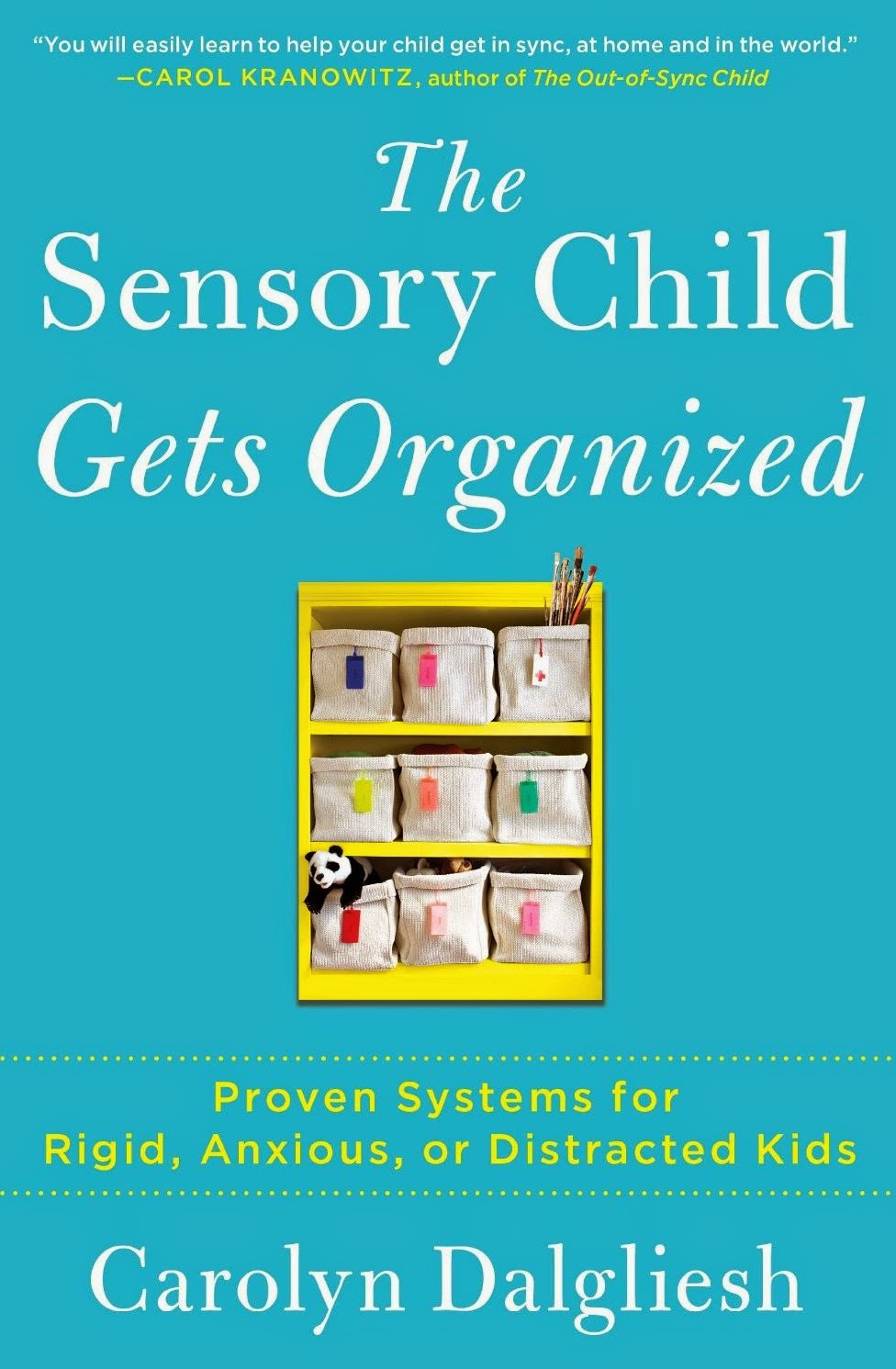Via @Storify (more #LibChat where this came from): Children's and teens' #library services, back-to-school https://t.co/hwvodSvda2 #libpitch
— Cynthia M. Parkhill (@CynthiaParkhill) July 31, 2014Wednesday, July 30, 2014
Children’s and teens’ library services, back to school
Hand-knit socks: First pair complete
The only thing more incredible than my first knitted sock is my first pair of knitted socks, which join several existing pairs that were hand-made with crochet. Here’s my knitting helper Starfire with my knitted and crocheted socks. Another sock is now underway on the double-pointed knitting needles.
Cross-posted to Ravelry
Tuesday, July 29, 2014
Kindle Unlimited: Librarians react
“Competing with Amazon on its own terms is not a good direction for libraries. But thinking about how to complement Amazon is worthwhile.” As related by Matt Enis for The Digital Shift, librarians like Jimmy Thomas, quoted above, reacted this week to Amazon’s launch of a subscription service for the Kindle: for $9.99 per month, subscribers will have unlimited access to a selection of 600,000 eBooks and more than 2,000 audio books.
Also published on LinkedIn.com and Library 2.0
Also published on LinkedIn.com and Library 2.0
‘Twelve Steps to a Compassionate Life’ by Karen Armstrong
In Twelve Steps to a Compassionate Life, Karen Armstrong relates how she asked the nonprofit group Technology, Entertainment, Design (TED) to help her create a Charter for Compassion that would be written by leading thinkers from a variety of faiths.
“Thousands of people from all over the world contributed to a draft charter on a multilingual website in Hebrew, Arabic, Urdu, Spanish, and English; their comments were presented to the Council of Conscience, a group of notable individuals from six faith traditions (Judaism, Christianity, Islam, Hinduism, Buddhism, and Confucianism) who met in Switzerland in February 2009 to compose the final version.”
Saturday, July 26, 2014
Hand-knit sock, shaped for right foot
I’ve completed the right foot in my first knit pair of socks. (And yes, it really is tailored specifically for the right foot through my placement of toe-shaping decreases).
Friday, July 25, 2014
‘Navigating Early’ by Clare Vanderpool
Early Auden sees a story in the numbers that make up Pi. His response when confronted with the claim by a professor that the number 1 has disappeared from Pi and that Pi will eventually end, is that “sometimes he’s hard to find for a while, but he always comes back. I always find him.”
In 1945, Early and a classmate, Jack Baker, follow the Appalachian Trail on a quest to “look for Pi.”
As the journey unfolds, Early reveals details about his older brother, reportedly killed during D-Day (the Allied invasion at Normandy).
In 1945, Early and a classmate, Jack Baker, follow the Appalachian Trail on a quest to “look for Pi.”
As the journey unfolds, Early reveals details about his older brother, reportedly killed during D-Day (the Allied invasion at Normandy).
Thursday, July 24, 2014
Library teen crafting: Decorated book bags
Had a great time Tuesday decorating this canvas bag during the Ashland library teen department’s summer crafting activity. Watch the Jackson County Library Services calendar for upcoming activities. Summer reading activities are scheduled at multiple branches in our library system.
Wednesday, July 23, 2014
Librarians’ importance to Senior/Capstone Projects
 |
| Cartoon image created with Bitstrips |
Color communication: Go, slow or stop
 |
| Image credit: Autistic Self Advocacy Network |
‘Open’ verification of information and source
How do we define verification in 2014? For PBS MediaShift, Julie Posetti writes thoughtful commentary about journalists’ use of social media to verify content and source.
Monday, July 21, 2014
Bitstrips: Reclaiming public transportation narrative
Reclaiming my public transportation narrative from the Bitstrips app: a validation of travel by bus, and identification of myself among the growing number of people who rely on public transportation.
Sunday, July 20, 2014
Jackson County Library District: Full rate first year
Jackson County homeowners will pay the maximum tax rate possible for the first year under the Jackson County Library District, as reported July 17 by the Medford Mail Tribune.
Bitstrips: Introducing a cartoon version of myself
Here’s my first Bitstrips comic panel, featuring a cartoon version of myself, that was created using an interface through Facebook.
Saturday, July 19, 2014
Validated by the fact that ‘Food Chaining’ is a thing
“Validation” would be my choice if I had to name my feelings reading this statement by Loree Primeau, PhD: “Since feeding involves all sensory systems (sight, smell, sound, touch, and taste), eating is the most difficult sensory task that children face.”
Eating continues to be the most difficult sensory task for this woman on the autism spectrum.
To expand my palate, my husband and I take an approach very similar to the “food chaining” discussed by Primeau at Aspergers101.
It takes time for me to get used to an unfamiliar food, and it requires considerable fortitude to be willing to try new things. An experience that is already fraught with challenges on the basis of unfamiliar or unpleasant tastes or textures is further burdened by past experiences and prevalent social attitudes.
Eating continues to be the most difficult sensory task for this woman on the autism spectrum.
To expand my palate, my husband and I take an approach very similar to the “food chaining” discussed by Primeau at Aspergers101.
It takes time for me to get used to an unfamiliar food, and it requires considerable fortitude to be willing to try new things. An experience that is already fraught with challenges on the basis of unfamiliar or unpleasant tastes or textures is further burdened by past experiences and prevalent social attitudes.
Wednesday, July 16, 2014
‘The Fault in Our Stars’ read-alike library display
Here’s something I’d love to duplicate in the Bellview Elementary School library — customized for our students’ reading preferences — when school resumes this fall.
Created by Julie Wood and showcased at Library Displays, this is a John Green read-alike display, “relevant to the current movie release of ‘The Fault in Our Stars.’”
In her description of the display, Wood discusses design motifs that played off the color scheme and cloud motif on the original book jacket art.
The blog administrator pairs Wood’s display with a link to a Buzzfeed compilation by Arielle Calderon, “17 Books to Read if You Liked ‘The Fault in Our Stars.’”
Teen crafting: Mobile device carrying pouch
Looking ahead with fall “Teen Crafternoon” ideas for the Ashland Branch Library teen department and Jackson County Library Services: How about a carrying pouch for a hand-held device?
Netflix and libraries: Crucial differences
“The library is not a Netflix for books.” For Bookriot.com, Kelly Jensen explains crucial differences between Netflix and libraries: the former being a for-profit company that bases its service upon the level of access paid for, while the latter provide equitable access and services to any and all of its patrons.
Tuesday, July 15, 2014
Associate degree, Library and Information Technology
Thursday, July 10, 2014
Autism advocacy: It’s our table
Many things have changed during the past decade of autism advocacy, according to author John Elder Robison, writing at his personal blog.
“Between growing up, being recognized in adulthood, and developing more ability to communicate effectively, members of our autism community have become far more able to speak for ourselves. Given that reality, I believe it’s time for a shift of balance in some of the organizations and groups involved with autism.”
“Between growing up, being recognized in adulthood, and developing more ability to communicate effectively, members of our autism community have become far more able to speak for ourselves. Given that reality, I believe it’s time for a shift of balance in some of the organizations and groups involved with autism.”
‘Chicka Chicka Boom Boom Art’
“Chicka Chicka Boom Boom Art”: There was an abundance of activity on Tuesday in the Ashland Branch Library.
After helping teen librarian Esther Mortensen set up for the construction of found-object robots, I responded to a request by Denise Wilson for additional volunteers in the library children’s department.
The children’s department had been transformed into a multi-station setting that explored color, collage, sound and the alphabet.
After helping teen librarian Esther Mortensen set up for the construction of found-object robots, I responded to a request by Denise Wilson for additional volunteers in the library children’s department.
The children’s department had been transformed into a multi-station setting that explored color, collage, sound and the alphabet.
Wednesday, July 9, 2014
#LibChat: Essential skill for librarians
Library professionals weigh in on the “one certification, license or skill” that they think librarians should have. Their responses are curated with Storify.
#LibChat: How libraries determine top candidate
From the July 9 #LibChat among library professionals: How libraries determine the top job candidate, when several meet (or exceed) qualifications.
Library service to patrons with autism
For School Library Journal, Lauren Barack writes an informative article about library services to children with autism. As a library assistant who is on the spectrum myself, I’m especially interested in programs that prepare library workers to assist this population.
‘The Sensory Child Gets Organized’
In The Sensory Child Gets Organized (Touchstone, 2013), author Carolyn Dalgliesh teaches parents/caregivers to design organizational systems that tap into the “innate strengths and learning styles” of children with attention-deficit/hyperactivity disorder, anxiety, obsessive-compulsive disorder, sensory processing disorder, bipolar disorder and autism.
Dalgliesh emphasizes three main questions: 1. How can I break this down into a more manageable task? 2. How can I eliminate some of the (external and/or internal) stimuli that may be distracting? and 3. What visual aid can I create to support the task at hand?
Dalgliesh emphasizes three main questions: 1. How can I break this down into a more manageable task? 2. How can I eliminate some of the (external and/or internal) stimuli that may be distracting? and 3. What visual aid can I create to support the task at hand?
Tuesday, July 8, 2014
Harry Potter: Dumbledore’s Army reunites during Quidditch Cup Finals
Read via Today.com, a reunion among members of “Dumbledore’s Army” during the 2014 Quidditch Cup Finals. Original writing by J.K. Rowling (as gossip correspondent Rita Skeeter).
Reading selections support UU parenting
 |
| Image credit: Karen Bellavance-Grace |
Monday, July 7, 2014
Teen summer reading: ‘Fobots’ at Ashland library
 |
| Image credit: Jackson County Library Services |
Found objects become “robots” during the Ashland library teen department’s summer reading program, 1 to 3 p.m. Tuesday.
Talk about a great way to repurpose found objects into unique, one-of-a-kind art. Mary Wilkins-Kelly leads Tuesday’s “Fobots” activity.
Upcoming teen activities include the monthly video and board games, noon to 3:30 p.m. July 19, and painted book-bags, 1 to 3 p.m. July 22.
Ashland Branch Library is located at 410 Siskiyou Blvd. For more information, contact the library’s teen department, 541-774-6994.
Sunday, July 6, 2014
‘Esperanza Rising’ by Pam Muñoz Ryan
Thirteen-year-old Esperanza lives a life of privilege with her father Sixto and her mother Ramona in Aguascalientes, Mexico. When her father is killed by bandits, Esperanza and her mother are forced to flee an attempt by one of Sixto’s brothers to force Ramona to marry him.
A former servant and his family are traveling to California and Esperanza and her mother join them.
Life in a work camp is an abrupt change; Esperanza has only been taught to give orders and has never had to fend for herself. And when her mother falls ill, Esperanza must even-more-so be a wage-earner for her family.
A former servant and his family are traveling to California and Esperanza and her mother join them.
Life in a work camp is an abrupt change; Esperanza has only been taught to give orders and has never had to fend for herself. And when her mother falls ill, Esperanza must even-more-so be a wage-earner for her family.
Saturday, July 5, 2014
Jackson County SMARTWorks: Mobile water station
“Water on Wheels”: That fresh, clean and mobile drinking water station viewed Friday during Fourth of July in Ashland, Oregon is a service of Jackson County SMARTWorks.
Fourth of July: Library remains accessible
Thank you to Ashland parade-goers for leaving the mobility walkway clear on Thursday in front of the Ashland public library. I appreciate the unrestricted access to our library amid holiday parade-viewing setup.
Published July 9 as a letter to the editor, Ashland Daily Tidings
Published July 9 as a letter to the editor, Ashland Daily Tidings
Friday, July 4, 2014
Web-ster’s in Ashland: Fourth of July entry
Another prize-winning Fourth of July parade entry by The Web-sters knitting, spinning and weaving store in Ashland: third place in the commercial division.
This year’s entry commemorated the store’s 30th anniversary with a knitting-covered, three-layer birthday cake that was towed on a flatbed trailer.
Designed by Erin Duffy, the float was assembled from knitting swatches. A group of seven or eight people, including Jonathan and me, marched alongside waving flags stitched together from knitting swatches.
This year’s entry commemorated the store’s 30th anniversary with a knitting-covered, three-layer birthday cake that was towed on a flatbed trailer.
Designed by Erin Duffy, the float was assembled from knitting swatches. A group of seven or eight people, including Jonathan and me, marched alongside waving flags stitched together from knitting swatches.
Wednesday, July 2, 2014
#LibChat: How can ‘difficult’ employees turn over a new leaf?
During a weekly chat among library professionals, attendees discuss dealing with difficult colleagues and what to do when the “difficult” one is you. Their responses are curated with Storify.
Tuesday, July 1, 2014
Merriam-Webster’s dictionary: New words in 2014
“Crowdfunding.” “Gamification.” “Hashtag.” “Social networking.” “Tweep.” Check out a sampling of more than 150 new words added to Merriam-Webster’s Collegiate Dictionary in 2014.
Subscribe to:
Comments (Atom)
Subject Classifications (Partial list, via Dewey Decimal System)
- 006.754-Social Media
- 020-Library and Information Science
- 020.7025-Library Education
- 020.92-Cynthia M. Parkhill (Biographical)
- 023.3-Library Workers
- 025.00285-Digital libraries
- 025.04-Internet Access
- 025.2-Libraries--Collection Development
- 025.213-Libraries--Censorship
- 025.3-Libraries--Cataloging
- 025.84-Books--Conservation and restoration
- 027.473-Public Libraries--Sonoma County CA
- 027.663-Libraries and people with disabilities
- 027.7-Academic Libraries--University of Central Missouri
- 027.8-School Libraries--Santa Rosa Charter School for the Arts
- 028.52-Children's Literature
- 028.535-Young Adult Literature
- 028.7-Information Literacy
- 158.2-Social Intelligence
- 302.34-Bullying
- 305.9085-Autism (People with Developmental Disabilities)
- 306.76-Sexual orientation and gender identity
- 371-Schools--Santa Rosa Charter School for the Arts
- 371-Schools--Santa Rosa City Schools
- 636.8-Cats
- 646.2-Sewing
- 658.812-Customer Service
- 659.2-Public Relations
- 686.22-Graphic Design
- 700-The Arts
- 746.43-Yarn bombing (Knitting and Crochet)
- 808.51-Public Speaking
- 809-Book Reviews
















